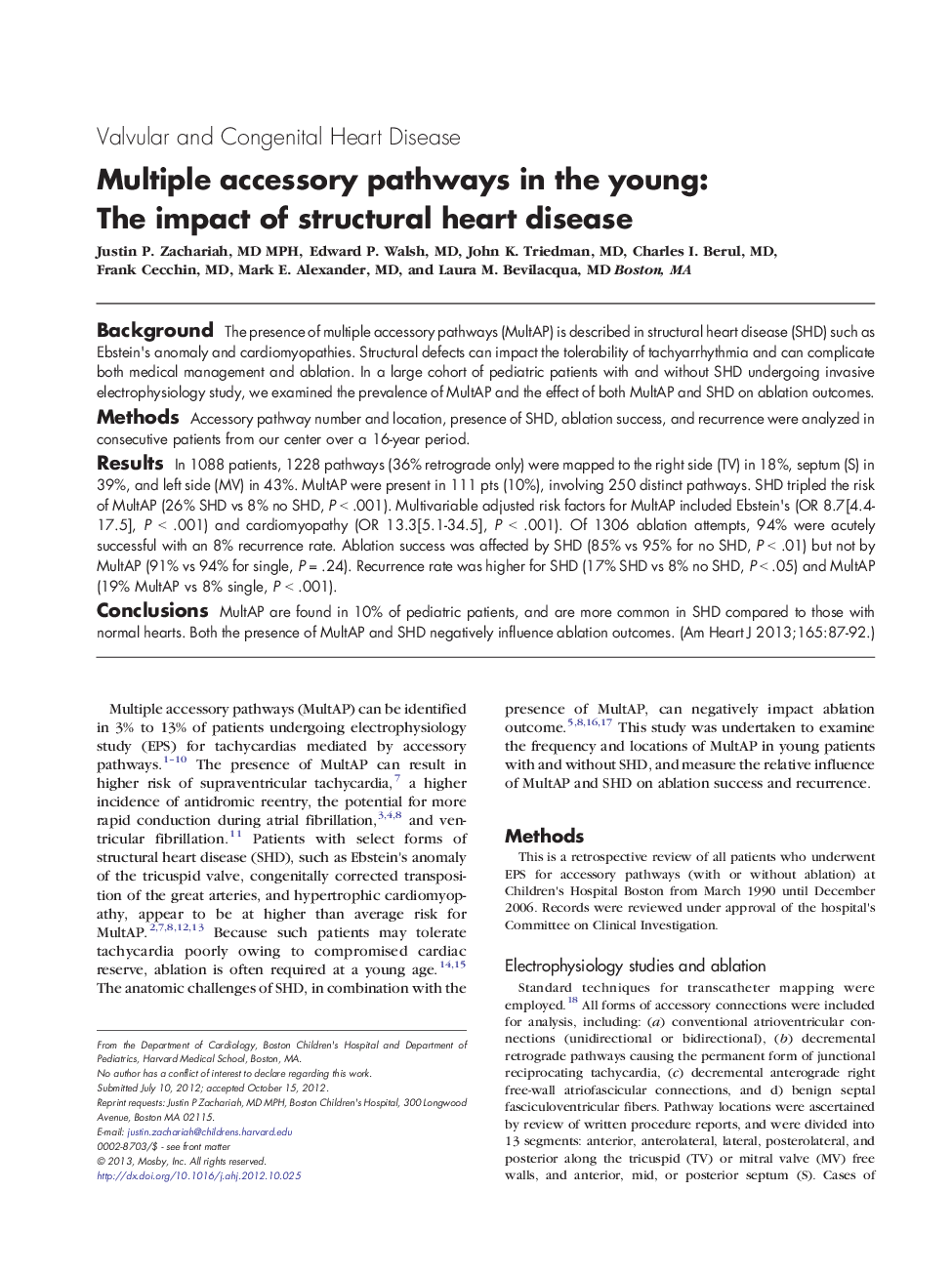| Article ID | Journal | Published Year | Pages | File Type |
|---|---|---|---|---|
| 2850131 | American Heart Journal | 2013 | 6 Pages |
BackgroundThe presence of multiple accessory pathways (MultAP) is described in structural heart disease (SHD) such as Ebstein's anomaly and cardiomyopathies. Structural defects can impact the tolerability of tachyarrhythmia and can complicate both medical management and ablation. In a large cohort of pediatric patients with and without SHD undergoing invasive electrophysiology study, we examined the prevalence of MultAP and the effect of both MultAP and SHD on ablation outcomes.MethodsAccessory pathway number and location, presence of SHD, ablation success, and recurrence were analyzed in consecutive patients from our center over a 16-year period.ResultsIn 1088 patients, 1228 pathways (36% retrograde only) were mapped to the right side (TV) in 18%, septum (S) in 39%, and left side (MV) in 43%. MultAP were present in 111 pts (10%), involving 250 distinct pathways. SHD tripled the risk of MultAP (26% SHD vs 8% no SHD, P < .001). Multivariable adjusted risk factors for MultAP included Ebstein's (OR 8.7[4.4-17.5], P < .001) and cardiomyopathy (OR 13.3[5.1-34.5], P < .001). Of 1306 ablation attempts, 94% were acutely successful with an 8% recurrence rate. Ablation success was affected by SHD (85% vs 95% for no SHD, P < .01) but not by MultAP (91% vs 94% for single, P = .24). Recurrence rate was higher for SHD (17% SHD vs 8% no SHD, P < .05) and MultAP (19% MultAP vs 8% single, P < .001).ConclusionsMultAP are found in 10% of pediatric patients, and are more common in SHD compared to those with normal hearts. Both the presence of MultAP and SHD negatively influence ablation outcomes.
